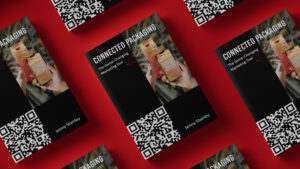By Ainhoa Robles, Global Brand Experience Lead, Reckitt
In the ever-evolving world of branding, it’s easy to get starry-eyed – over those venerable heritage brands, colossal entertainment giants, cutting-edge tech wizards, and trailblazing sports companies that every creative dreams of adding to their portfolio.
Yet, as someone who’s sailed through the choppy waters of both swanky agencies and the no-nonsense corporate design quarters, especially in the fast-paced FMCG arena, I have come to believe it’s the quiet, unassuming corners of low-interest categories that are bursting at the seams with creative gold, waiting for a bit of magic to turn their fortunes around. These are the real playgrounds for adventure-hungry creatives, where the mundane beckons to be transformed into the remarkable.
Take the classic Oatly story for instance. Who would have thought oat milk could stir up such a buzz? Oatly mastered the art of communication with its distinct messaging, memorable tone, and captivating content, all sprinkled with a healthy dose of personality, wit, and a touch of cheeky activism. It masterfully resonated and aligned with the cultural movements of environmental sustainability and wellness, propelling its brand from obscurity to a household name in the blink of an eye. What creative wouldn’t jump at the chance of being part of that journey?
But, how can we turn the “meh” into “wow”? How do brands in these humble sectors grab and keep the spotlight in an ever-shifting world of consumer whims and wishes?
Redefining what you stand for
Turning a not-so-exciting brand into something everyone talks about is quite the creative challenge and isn’t something that happens overnight or can be done in isolation. This is a team sport and it needs some serious commitment, digging into your brand, your market and really getting what makes your audience tick – their values, their passions, what they’re all about.
It isn’t just about numbers and demographics; it’s about syncing your brand core with the cultural heartbeat of your audience. It’s about lifting your brand from something people just buy to something they truly connect with and about using a creative approach to redefine what a product can stand for – and how it can stand out in any category.
Take Finish, for example. It has been urging folks to ‘skip the rinse’ and save water for years now, evolving from a functional dishwasher brand into a true champion for the planet. Reckitt stable-mate Vanish, meanwhile, is going beyond its stain-busting origins to encourage people to rethink the longevity of their clothes.
Weaving in a cultural narrative
The lesson here? It’s not all about lavish budgets, flashy campaigns or ‘sexy’ categories. Brands that truly resonate are those that weave into the cultural narrative, inspiring minds and touching hearts.
This is not about hopping on the latest cultural trend for the sake of it, but about staying grounded, keeping the conversation going, adapting to cultural shifts, and remaining engaged, in meaningful and authentic ways. High street beauty brand Lush does this so well – always in step with its consumers and making a stand (as it did when it exited social media “Until they take action to provide a safer environment for users”).
Also, don’t be afraid to inject some fun and personality into your brand. Even the simplest products can shine when you tell their story with a bit of warmth and a genuine smile – it’s the secret ingredient that can turn the ordinary into something people will remember and love. US brand Scrub Daddy is a perfect embodiment of this: a cleaning sponge is not likely to excite many people no matter how innovative the product. But Scrub Daddy leaned into the Gen Z sense of humour with a self-aware and fun approach to communication, making it America’s favourite sponge.
So, to all the creatives, poised on the edge of their next big project, I would urge you to look beyond the flashy allure of high-profile categories. There is magic in the unexplored corners of the mundane. And to those marketeers pondering the potential of their seemingly uninspiring category, take heart.
Seek deeper insights. Go beyond surface-level understanding and dive into the cultural and emotional nuances that drive consumer behaviour in your categories. Blemish product Starface, for example, leans into young people’s anxiety around skin breakouts, turning the stigma associated with spots into a more positive statement.
Turning a ‘who-even-cares’ product into the talk of the town needs time, drive, elbow grease, a healthy dose of creativity and ‘stick-to-it’ attitude, Sure, it’s a bit of a tightrope walk, but for those willing to rise to the challenge, and seek beyond the obvious, the payoff is massive and truly rewarding.










